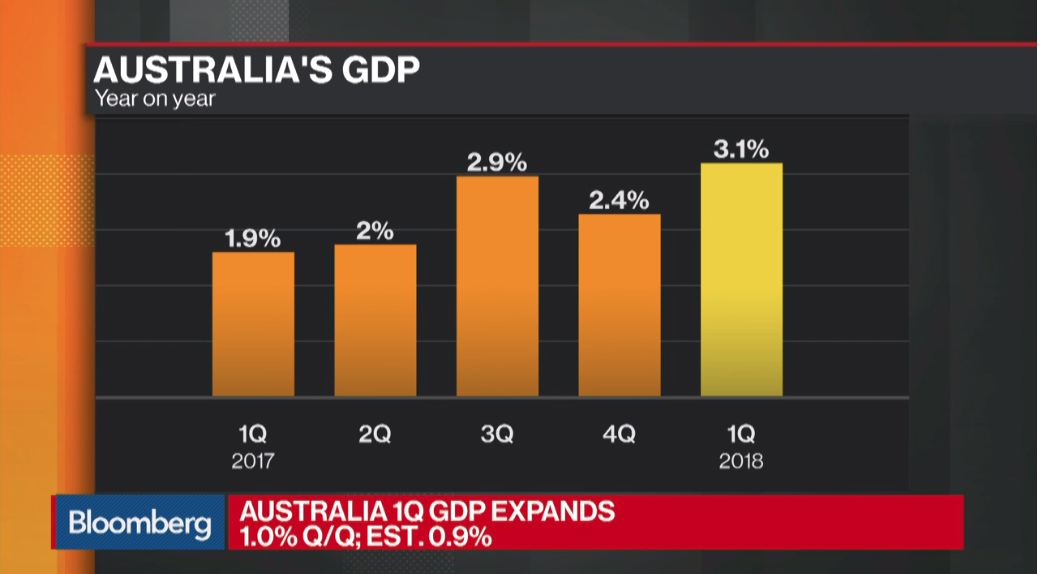Business
Beginner’s Guide – How To Start A Business As A Teenager

Embarking on the journey of starting a business as a teenager can be an exciting and rewarding experience. With the right guidance and determination, you can turn your entrepreneurial dreams into a reality. This beginner’s guide is designed to provide you with important steps and tips to help you navigate the world of entrepreneurship and kickstart your business venture successfully.
Preparing for Your Entrepreneurial Journey
Assessing Your Interests and Skills
Journey Before embarking on your entrepreneurial journey as a teenager, it’s crucial to assess your interests and skills. Take some time to reflect on what you are passionate about and what you excel at. Consider your hobbies, strengths, and areas where you see opportunities for growth. Identifying these factors will not only help you choose a business idea that aligns with your passions but also plays to your strengths.
As a teenager, you have unique perspectives and experiences that can give you a competitive edge in the business world. Whether it’s a talent for graphic design, a love for baking, or a knack for social media marketing, embracing your interests and skills will set a strong foundation for your entrepreneurial journey.
Understanding the Legal Requirements for Teen Entrepreneurs
Teen Before submerging yourself in your business venture, it’s necessary to understand the legal requirements for teen entrepreneurs. Depending on your location, there may be age restrictions, permits, licenses, or other regulations you need to comply with to operate a business legally as a teenager. Researching and familiarizing yourself with these legal aspects will help you avoid any potential setbacks and ensure that you are starting your business on the right foot.
Plus
Setting Goals and Creating a Business Plan
Goals Setting clear goals and creating a well-thought-out business plan are vital steps in preparing for your entrepreneurial journey as a teenager. Define your short-term and long-term objectives, outlining what you want to achieve with your business. A business plan will serve as a roadmap, guiding you through the process of starting and growing your venture. Include details such as your target market, products or services, marketing strategies, financial projections, and operational plans.
Assessing In addition to setting goals, a comprehensive business plan will also help you attract potential investors, partners, or even customers. It demonstrates your vision, passion, and commitment to your business idea, instilling confidence in those who may support your venture. Take the time to refine your goals and business plan, ensuring that they are realistic, achievable, and aligned with your aspirations as a teenage entrepreneur.
Generating Business Ideas
While contemplating the idea of starting a business as a teenager, one of the crucial initial steps is to generate innovative and viable business ideas. This stage is where your journey as an entrepreneur begins, and it is imperative to explore various possibilities to find the right business concept that aligns with your passion and skills.
How to Brainstorm and Validate Business Ideas
Generating business ideas involves brainstorming sessions where you can jot down any potential concepts that come to mind. Consider your interests, hobbies, and problems you encounter in your daily life as sources of inspiration. Once you have a list of ideas, it is important to validate them by conducting market research, seeking feedback from potential customers, and evaluating the feasibility of implementation.
When validating business ideas, consider factors such as market demand, competition analysis, and potential profitability. It is crucial to ensure that there is a need for your product or service in the market and that you have a unique selling proposition that sets you apart from competitors. This process will help you refine your ideas and focus on concepts with the highest potential for success.
Tips for Conducting Market Research
Any successful business idea is rooted in a deep understanding of the target market. To conduct effective market research as a teenager, utilize online resources, surveys, and interviews to gather insights about your target audience’s preferences, behaviors, and pain points. Analyze industry trends and gather data to make informed decisions about your business concept.
- Utilize social media platforms to engage with your target audience and gather feedback.
- Assume that your market research needs to be ongoing to adapt to changing consumer preferences and market dynamics.
Tips for conducting market research as a teenager include leveraging your network, seeking mentorship from experienced entrepreneurs, and staying updated on industry news and trends. By staying proactive and continuously learning about your target market, you can make informed decisions that will drive the success of your business venture.
Funding Your Business
Not having enough funds can be a major roadblock when you’re looking to start your own business as a teenager. However, there are various options you can explore to secure financing and get your entrepreneurial dreams off the ground.
Exploring Different Financing Options
Your age may limit traditional financing options such as bank loans, but don’t let that discourage you. Consider alternative routes like crowdfunding, seeking investment from family and friends, participating in pitch competitions, or joining entrepreneurship programs that provide seed funding.
Another option is to bootstrap your business, which means using your own savings or revenue generated by the business to fund its growth. This can be a slower process, but it gives you control over your business without taking on debt or giving away equity.
How to Pitch Your Business to Potential Investors
The key to successfully pitching your business to potential investors is to clearly communicate your business idea, market research, revenue model, and why you believe in your venture. Start by creating a compelling pitch deck that highlights these aspects, and practice your pitch until it’s polished and confident.
The most important thing is to be passionate about your business and convey that passion to potential investors. Be prepared for tough questions, listen to feedback, and be open to making changes based on investor input.
The way you present your business to potential investors can make or break your chances of securing funding. Make sure to tailor your pitch to the specific audience and be authentic in your delivery.
Money Management Basics for Teens
Pitch your business with a strong focus on financial projections, demonstrating a clear understanding of your business’s revenue streams, expenses, and potential profitability. Show investors that you have a solid grasp of your finances and a plan for sustainable growth.
Always have a contingency plan in case things don’t go as expected financially. Be transparent about the risks involved in investing in your business and show that you have thought through potential challenges.
Money Management Basics for Teens
Your understanding of basic money management principles will not only help you secure funding for your business but also ensure its long-term success. Learn about budgeting, saving, and investing to make informed financial decisions for your business and personal finances.
Building Your Brand
Your brand is more than just a business name and logo. It represents the identity and reputation of your business, which sets you apart from competitors. Building a strong brand is crucial for attracting customers and creating lasting relationships with them.
Factors in Choosing a Business Name and Logo
When choosing a business name, consider something that is easy to remember, reflects your brand’s message, and is available as a domain name for your website. Your logo should be simple, versatile, and visually appealing to leave a lasting impression on your audience. Knowing your target market will help you tailor your business name and logo to appeal to them.
- Choose a name that resonates with your target audience.
- Keep your logo design clean and professional.
- Make sure your business name and logo are unique to avoid any legal issues.
Establishing an Online Presence
Businesses today need to have a strong online presence to reach a larger audience and stay competitive in the market. This means having a professional website, active social media profiles, and utilizing digital marketing strategies to promote your brand.
This includes optimizing your website for search engines, creating engaging content on social media platforms, and using online advertising to drive traffic to your website. Building an online presence is imperative for connecting with your target audience and building brand awareness in the digital age
Tips for Effective Marketing and Social Media Strategies
With the rise of social media, businesses can now reach a global audience with just a few clicks. It is imperative to have a solid marketing plan that includes social media strategies to promote your brand and engage with your customers effectively.
- Identify which social media platforms your target audience uses the most.
- Create a content calendar to consistently post and engage with your followers.
- Monitor your social media analytics to track the performance of your campaigns and make necessary adjustments.
After implementing these strategies, analyzing the data and results will help you fine-tune your marketing efforts for better performance. Building a strong online presence and utilizing social media effectively can significantly impact the growth and success of your business.
Running Your Business
All successful businesses require effective management to thrive. As a teenager, running your own business can be both exciting and challenging. In this chapter, we will discuss some key strategies to help you navigate the day-to-day operations of your business.
How to Manage Time Between School and Business?
On your journey as a teenage entrepreneur, one of the biggest challenges you will face is finding a balance between your school responsibilities and running a business. It is important to create a schedule that allocates time for both schoolwork and business tasks. Prioritize your tasks and set realistic goals to ensure you stay on track with your commitments. Remember to communicate with your teachers and parents about your business so they can support you in managing your time effectively.
Time management is crucial for maintaining a healthy school-business balance. Make use of technology tools like calendar apps and task managers to organize your daily activities. Delegate tasks when possible, and don’t hesitate to ask for help when you need it. The key is to find a rhythm that works for you and stick to it consistently.
Tips for Customer Service and Building Clientele
Providing excellent customer service is important for building a loyal clientele base. Always prioritize your customers’ needs and ensure prompt and efficient communication. Personalize your interactions with clients to make them feel valued and appreciated. Respond to inquiries and feedback promptly, and address any issues or concerns with professionalism and empathy.
- Listen actively to your customers’ feedback and adapt your products or services based on their suggestions.
For instance, offering promotions or hosting events for your loyal customers can help strengthen your relationship with them. The key to building a strong clientele base is to foster trust and loyalty by consistently delivering exceptional customer service.
- Go the extra mile to exceed your customers’ expectations and provide a memorable experience that will keep them coming back.
Scaling and Growth
Many teenagers dream of turning their small business into a successful venture that reaches a wider audience and generates more revenue. Scaling and growth are important aspects of building a sustainable business for the long term. As a young entrepreneur, it is important to understand the strategies and considerations involved in expanding your business.
Knowing When and How to Expand Your Business
For teenagers looking to scale their businesses, it is crucial to know when the right time is to expand. Consider factors such as customer demand, market trends, and financial stability before making the decision to grow. Conduct market research to identify opportunities for expansion and develop a solid business plan that outlines your growth strategy. Whether it’s opening a new location, launching an online store, or introducing new products and services, ensure that you have the resources and capabilities to support the expansion.
Knowing how to expand your business is just as important as knowing when. Develop a clear growth strategy that aligns with your long-term goals and values. Invest in marketing and sales efforts to reach a larger audience and attract new customers. Be prepared to take calculated risks and make strategic decisions that will drive the growth of your business while maintaining quality and customer satisfaction.
Leveraging Partnerships and Collaborations
On your journey to scale your business, consider the power of partnerships and collaborations. By teaming up with other businesses, influencers, or organizations, you can expand your reach and access new markets. Collaborations can also provide opportunities for co-branded marketing campaigns, product enhancements, and shared resources. Look for partners who share your vision and values to create mutually beneficial relationships that contribute to the growth of your business.
Overcoming Challenges
Starting a business as a teenager can be an exciting yet challenging journey. It’s important to be prepared to face obstacles along the way and develop strategies to overcome them. In this chapter, we will discuss how to navigate through the challenges and setbacks that may arise, as well as how to stay motivated and resilient in pursuit of your entrepreneurial goals.
How to Handle Setbacks and Failure
Challenges are inevitable in the world of business, and setbacks are bound to happen. It’s crucial to remember that failure is not the end but a stepping stone towards success. Instead of viewing setbacks as roadblocks, see them as opportunities to learn and grow. Reflect on what went wrong, identify the lessons to be learned, and use them to improve your business strategy moving forward.
When faced with failure, it’s necessary to stay resilient and persistent. Surround yourself with a support system of mentors, friends, or family who can offer guidance and encouragement during tough times. Remember that setbacks are a natural part of the entrepreneurial journey, and staying positive and determined will help you overcome any obstacles that come your way.
Strategies for Staying Motivated and Resilient
Being a teenage entrepreneur can be overwhelming at times, but staying motivated is key to pushing through challenges and achieving your business goals. One strategy to stay motivated is to set specific and achievable short-term goals that will keep you focused and motivated as you make progress. Celebrate small wins along the way to boost your confidence and keep your momentum going.
Furthermore, practicing self-care and maintaining a healthy work-life balance is necessary for staying motivated and resilient. Make time for activities that rejuvenate you, whether it’s exercise, hobbies, or spending time with loved ones. Remember that taking care of yourself is just as important as taking care of your business.
Conclusion
Following this beginner’s guide on how to start a business as a teenager, you now have a solid foundation to kickstart your entrepreneurial journey. Recall, starting a business at a young age may come with its challenges, but with determination, perseverance, and the right guidance, you can turn your dreams into reality.
By utilizing the resources available to you, such as online tools, mentors, and support networks, you can overcome obstacles and thrive in the world of entrepreneurship. Stay focused, be adaptable, and always be willing to learn and grow. With dedication and hard work, there is no limit to what you can achieve as a teenage business owner.
Business
Uber Settles Taxi Court Battle for $272 Million

Uber has agreed to pay a whopping $272 million to resolve a protracted legal dispute with taxi drivers and their associations, marking a significant milestone in the ride-sharing and transportation industries. This large payment is a turning point for the ride-sharing sector as a whole, not just for Uber. This article explores the complexities of the lawsuit, the settlement’s effects, and the settlement’s wider implications for the provision of transportation services in the future.
The Origins of the Legal Battle:
The legal battle between Uber and the taxi industry has its origins in the early stages of the ride-sharing movement. Traditional cab operators and drivers expressed concerns about unfair competition and regulatory compliance as Uber and similar services gained traction. Legal challenges against Uber were brought by taxi associations all across the world. They claimed that Uber had violated transportation legislation, engaged in unfair business practices, and had lost revenue as a result of the growth of ride-sharing services.
The Legal Landscape:
Uber and the taxi industry were embroiled in a multi-front legal struggle that was being waged in different jurisdictions worldwide. The classification of Uber drivers, governmental monitoring of ride-sharing platforms, and the effect of technological innovation on established taxi services were at the center of these legal issues. The lengthy duration of the
Uber’s Response:
Uber remained true to its position as a tech platform that links drivers and passengers rather than a transportation provider governed by the same laws as conventional taxi services throughout the court dispute. Uber maintained that its cutting-edge business strategy, which offers more efficiency, affordability, and convenience than conventional taxis, signifies a paradigm shift in the way customers access transportation services.
Uber persisted in growing its global presence in spite of legal issues and regulatory scrutiny, revolutionizing urban mobility and changing the transportation industry. The business’s capacity to bounce back from setbacks and adjust showed how disruptive technology-driven innovation can be in established sectors.
The Settlement:
Uber and taxi drivers and their groups have achieved a historic settlement, with Uber agreeing to pay $272 million to end the case, following years of legal wrangling and courtroom fights. Even while the compensation is large financially, it also serves as a metaphor for Uber and the taxi industry’s reconciliation and compromise.
Key Terms of the Settlement:
The $272 million settlement contains provisions for regulatory compliance and collaboration between Uber and the taxi sector, as well as compensation for associations and taxi drivers impacted by the growth of ride-sharing services. The settlement also creates a framework for continued discussion and cooperation to address common issues and opportunities in the quickly changing transportation sector.
Implications and Future Outlook:
The future of ride-sharing and transportation services is significantly affected by the settlement reached between Uber and the taxi industry. It foreshadows a change towards increased collaboration and integration between conventional cab companies and online platforms, opening the door to a more peaceful and long-lasting ecology.
Furthermore, the settlement underlines how increasingly people are realizing how important it is to have fair and transparent regulations in the ever-changing transportation sector. It is becoming more and more difficult for regulators and policymakers to strike a balance between promoting innovation and defending the interests of all stakeholders as ride-sharing continues to transform cities and consumer behavior.
Finding a middle ground between protecting the interests of all parties involved and encouraging innovation.
To sum up, the $272 million settlement that Uber reached with the taxi industry is a critical turning point in the development of ride-sharing and transportation services. The end of this protracted legal dispute is indicative of a rising understanding that, in the face of technological upheaval, cooperation and compromise are essential. Urban mobility promises to be both inclusive and revolutionary in the future as Uber and other ride-sharing platforms develop alliances with conventional stakeholders and manage the regulatory landscape.
Business
Australia’s GDP Outlook Brightens with Better-Than-Expected Exports

Fears of an economic contraction have been dulled with the latest net export result exceeding expectations.
Ahead of December quarter national accounts on Wednesday, some economists were warning GDP may have gone backwards for the last three months of 2023.
Data released on Monday showed firms running down their inventories over the quarter in a result that was weaker than expected and anticipated to wipe one percentage point off the December GDP.
But Tuesday’s stronger-than-expected net exports outcome should add 0.6 percentage points to growth over the quarter and counter some of the drag from private inventories.
Government spending data, also released on Tuesday, tracked broadly in line with expectations, with public sector inventories to contribute 0.4 percentage points to growth according the ABS.
ANZ senior economist Blair Chapman said the larger-than-expected net exports addition and an increase in public sector inventories would offset weak private inventories.
The bank is expecting a weak 0.3 per cent increase over the quarter, a little higher than the 0.2 per cent market forecast.
Annually, it anticipates a 1.5 per cent lift.
Mr Chapman said such a result would line up with the Reserve Bank’s expectations of where growth should be tracking.
“But, while GDP may come in roughly around the RBA’s expectations, recent monthly consumer price index and labour market data have increased the risk that the RBA could ease sooner than our November expectation,” he said.
Treasurer Jim Chalmers was out warning of a weak growth report on Tuesday, though his remarks came before the final data releases that slot into GDP.
“There is enough around to trouble us about how the economy finished 2023,” he told ABC TV.
Despite the forecasts for the quarter, Dr Chalmers said Australia was in a better position than similar economies, which had gone into recession during the same time period.
“The December quarter in the Australian economy and indeed the global economy was quite weak,” he said.
“Remember, that was the quarter where we saw Japan and the UK both go into recession.
“We had an interest rate hike right in the middle of that December quarter, we had those persistent cost of living pressures that people are confronting in our communities and around our country.”
Business
Importance of Influencer Marketing for Leads

Utilizing influential individuals in the digital world to drive lead generation is a powerful marketing strategy that can yield significant results for businesses. In today’s crowded online marketplace, it’s essential for brands to understand the impact of influencer marketing and how to effectively leverage it to reach their target audience. Whether you’re a small startup or an established corporation, tapping into the power of influential individuals can skyrocket your lead generation efforts and boost brand awareness. In this blog post, we’ll delve into the secrets of influencer marketing and provide actionable insights on how to harness the influence of key individuals to drive leads and grow your business.
Key Takeaways:
- Identify the right influencers: It is crucial to research and identify influencers who align with your brand and have an engaged audience relevant to your target market.
- Build authentic relationships: Developing genuine connections with influencers is key to establishing trust and ensuring the success of influencer marketing campaigns.
- Provide value to the influencer: Offering value, whether it be through monetary compensation, exposure, or exclusive opportunities, is essential in building a mutually beneficial relationship with influencers.
- Create compelling content: Collaborating with influencers to create high-quality and engaging content that resonates with their audience is crucial for successful lead generation.
- Track and measure results: Utilizing analytics and performance metrics to track the success of influencer marketing campaigns is important in refining strategies and maximizing lead generation efforts.
Identifying the Right Influencers
Now that we understand the importance of influencer marketing, it’s crucial to identify the right influencers who can effectively help in lead generation. Identifying the right influencers is a meticulous process that involves understanding their influence, relevance, and various criteria for selection.
Understanding Influence and Relevance
On the quest to identify the right influencers, it’s essential to understand the concepts of influence and relevance. Influence refers to an individual’s ability to affect the opinions, attitudes, and behaviors of others. When it comes to influencer marketing, it’s important to identify individuals who have a strong influence in your target market. Relevance, on the other hand, refers to the alignment between the influencer’s content and your brand or product. The more relevant the influencer’s content is to your target audience, the more effective their influence will be in generating leads.
Criteria for Selecting Influencers
Criteria for selecting influencers include factors such as the size and engagement of their audience, the authenticity and credibility of their content, their alignment with your brand values, and their past collaborations with other brands. The size and engagement of an influencer’s audience are crucial as it determines the reach and impact of their influence. Authenticity and credibility play a significant role in gaining the trust of their followers, essential for lead generation efforts. It is also important to ensure that the influencer’s values align with your brand to maintain brand authenticity.
This careful consideration of the criteria for selecting influencers will ensure that you partner with individuals who can effectively drive lead generation through their influence and relevance. With the right influencers on board, your influencer marketing strategy will have the potential to reach a wider audience, build trust, and generate high-quality leads for your business. This process demands attention to detail and a thorough understanding of your target audience and brand values.
Crafting the Perfect Collaboration
Clearly, one of the most important aspects of influencer marketing is the collaboration between the brand and the influencer. Crafting the perfect collaboration is crucial for a successful influencer marketing campaign. It requires the brand and the influencer to work together seamlessly, aligning their objectives and ensuring that the partnership benefits both parties.
Establishing Clear Campaign Goals
For a successful influencer marketing collaboration, it is essential to establish clear campaign goals from the outset. Whether the goal is to increase brand awareness, drive website traffic, or generate leads, both the brand and the influencer need to be on the same page. Setting clear and measurable objectives will guide the collaboration and ensure that the campaign delivers the desired results. It is important to communicate these goals effectively and create a plan that aligns with the brand’s overall marketing strategy.
Creating Authentic and Engaging Content
With the rise of ad blockers and the decline of traditional advertising effectiveness, creating authentic and engaging content has become the key to capturing the attention of the audience. Influencer marketing offers brands the opportunity to connect with their target audience in a more authentic way. By collaborating with influencers who have a genuine connection with their followers, brands can create content that resonates and drives engagement.
Engaging content that feels natural and fits seamlessly into the influencer’s feed or platform will enhance the brand’s message and increase the likelihood of generating leads. It is essential to focus on storytelling and creating content that adds value to the influencer’s audience while also promoting the brand in a subtle and authentic manner. This approach will result in higher engagement and a more positive reception from the audience.
Optimizing and Scaling Your Influencer Campaigns
Your influencer marketing campaigns have successfully generated leads and increased brand awareness. Now it’s time to optimize and scale your efforts to reach even greater heights of success. Here’s how you can take your influencer campaigns to the next level.
Measuring Campaign Success
Your first step in optimizing and scaling your influencer campaigns is to measure their success. Use tools and analytics to track metrics such as engagement, click-through rates, and conversion rates. This data will help you understand which campaigns are most effective and which influencers are driving the best results for your brand. With this information, you can make informed decisions about where to allocate more resources and which influencers to continue working with.
Strategies for Scaling Up
Scaling up your influencer campaigns involves expanding your reach and impact. This can be achieved through collaborating with a wider network of influencers, investing in sponsored content, and increasing your budget for influencer partnerships. As your campaigns grow, it’s important to maintain the authenticity and credibility of your brand by selecting influencers who align with your values and resonate with your target audience.
Campaigns that successfully scale up will have a broader reach and generate even more leads and conversions for your business. However, it’s essential to carefully manage and monitor the increased activity to ensure that your brand’s image remains consistent and compelling.
Navigating Challenges in Influencer Marketing
Keep, influencer marketing is not without its challenges. As with any marketing strategy, there are hurdles that must be navigated in order to achieve success. Some of the most common challenges in influencer marketing include handling negative feedback and reputation management, legal considerations and compliance, and navigating the ever-changing landscape of social media platforms.
Handling Negative Feedback and Reputation Management
An influencer marketing campaign, no matter how carefully planned, can sometimes attract negative feedback. It’s important for brands to have a plan in place for handling criticism and negative feedback in a way that preserves their reputation and maintains the trust of their audience. Addressing negative comments or reviews in a timely and respectful manner can go a long way in mitigating any potential damage to a brand’s reputation. It’s also important for brands to work closely with influencers to ensure that any negative feedback is addressed appropriately and in a way that aligns with the brand’s values and messaging.
Legal Considerations and Compliance
For influencer marketing campaigns, there are legal considerations and compliance that must be carefully managed. From disclosing sponsored content to adhering to data privacy laws, brands must ensure that their influencer marketing efforts are in line with legal requirements. Failure to do so can result in legal trouble and damage to a brand’s reputation. It’s imperative for brands to work with legal professionals who are well-versed in influencer marketing and can provide guidance on compliance with relevant laws and regulations.
A comprehensive understanding of the legal landscape surrounding influencer marketing is crucial for brands looking to leverage influencer partnerships for lead generation. Ensuring compliance with data privacy laws, FTC guidelines, and other legal considerations is essential for building trust with consumers and safeguarding a brand’s reputation. Working with legal experts in the field of influencer marketing can provide brands with the necessary guidance and support to navigate these complex legal issues successfully.
The Power of Influencer Marketing for Lead Generation
The use of influential individuals in marketing campaigns can be an incredibly effective strategy for generating leads. By leveraging the existing authority and trust of these influencers, businesses can reach a wider audience and drive more conversions. In this digital age, where social media influencers hold significant sway over consumer behavior, incorporating influencer marketing into lead generation efforts is essential for staying competitive in the market. The most successful influencer marketing campaigns involve a careful selection of the right influencers, aligning their values with those of the brand, and creating authentic and engaging content that resonates with their followers. By following these influencer marketing secrets, businesses can maximize their lead generation efforts and achieve greater success in their marketing strategies.
FAQ
Q: What is influencer marketing and how does it work?
A: Influencer marketing is a strategy that involves leveraging influential individuals, or “influencers,” to promote a brand’s products or services to their audience. This is typically done through social media platforms, and influencers are chosen based on their following and relevance to the brand’s target audience. By partnering with influencers, brands can tap into their existing following and credibility to reach potential customers in a more authentic and effective way.
Q: How can influencer marketing help with lead generation?
A: Influencer marketing can help with lead generation by increasing brand visibility among a larger and more targeted audience. When influencers promote a brand’s products or services, their followers are more likely to trust and engage with the brand, leading to an increase in leads and potential customers. Additionally, influencers can create content that showcases the brand and its offerings, which can further drive lead generation through their authentic endorsement and recommendations.
Q: What are some key strategies for successful influencer marketing?
A: Key strategies for successful influencer marketing include identifying the right influencers for your brand, creating authentic and engaging partnerships, and measuring the success of your campaigns. It’s important to align with influencers whose values and audience align with your brand’s target audience. Additionally, creating a clear partnership that highlights the authenticity of the collaboration is essential, as well as measuring the performance of campaigns to optimize future influencer marketing efforts.
Q: How can a brand identify the right influencers for their influencer marketing campaigns?
A: Brands can identify the right influencers for their campaigns by considering factors such as the influencer’s relevance to their industry, the demographics and engagement of their followers, and the influencer’s past brand partnerships. It’s important to collaborate with influencers who resonate with your brand’s values and audience, and who have a genuine connection with their followers.
Q: What are the potential benefits of leveraging influential individuals for lead generation?
A: The potential benefits of leveraging influential individuals for lead generation include increased brand awareness, higher engagement and credibility, access to a larger audience, and the potential for long-term brand loyalty. Influencers can help brands reach new prospective customers and retain existing ones through their authentic and influential endorsements and content creation.
Q: What are some common pitfalls to avoid in influencer marketing for lead generation?
A: Common pitfalls to avoid in influencer marketing for lead generation include partnering with influencers who do not align with your brand, failing to establish clear campaign goals and expectations, and not measuring the success and ROI of influencer campaigns. It is crucial to conduct thorough research and due diligence before collaborating with influencers to ensure that their following and engagement are genuine and relevant to your brand.
Q: How can a brand measure the success of their influencer marketing campaigns for lead generation?
A: Brands can measure the success of their influencer marketing campaigns for lead generation by tracking key metrics such as reach, engagement, lead conversions, and overall ROI. Using tools and analytics provided by social media platforms, as well as implementing unique tracking links and codes, can help brands gain insight into the performance and effectiveness of their influencer marketing efforts.
-
Business2 years ago
How to Earn Money Writing Blog Posts in 2023: A Comprehensive Guide
-
Games2 years ago
How does Dead Space Remake enhance the Horror Classic of 2008
-
Video2 years ago
Everything you need to know about Starfield
-
Health2 years ago
How is Yoga and Pilates Bridging the Gap Between your Mind and Body
-
World2 years ago
Swiss Pharma Powerhouse Acino Expands into Latin America with M8 Pharmaceuticals Acquisition
-
Health2 years ago
Migraine medications significantly improve the quality of life
-
Self Improvement2 years ago
Enhancing Relationships and Emotional Intelligence Through Mindfulness Meditation
-
Video2 years ago
Winners and Losers of the 2023 NSW budget revealed





























